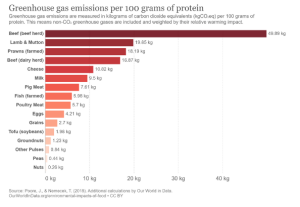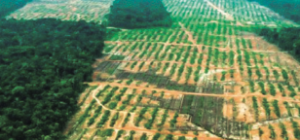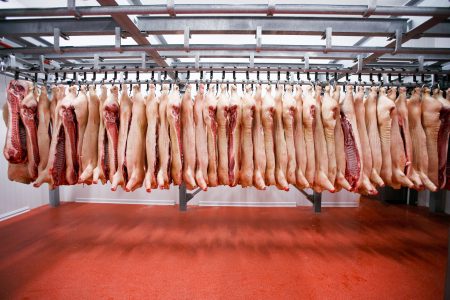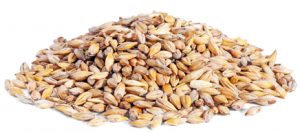The potential of pig production systems to reduce their environmental impact and contribute to the Net Zero Carbon target
Livestock industries, including pig production, are currently under scrutiny as to their environmental impact.
This scrutiny is expected to intensify parallel to rising concerns about climate change and the potential contribution of livestock to global warming.
Although the contribution per unit of meat from pig production systems to environmental impact is relatively low, pork is, at least for the time being, the most widely produced and consumed type of meat worldwide. As a result, it contributes significantly to various types of environmental impact.
![]() In 2013, the total contribution of pig production to greenhouse gas (GHG) emissions was estimated to be 668 million tonnes of CO2-eq. Which represents 9% of the total GHG emissions produced by animal production.
In 2013, the total contribution of pig production to greenhouse gas (GHG) emissions was estimated to be 668 million tonnes of CO2-eq. Which represents 9% of the total GHG emissions produced by animal production.
![]() In addition, pig production is considered to contribute greatly to the acidification and eutrophication of the environment due to nitrogen (N) and phosphorus (P) emmisions resulting from the storage and use of slurry in crop fields.
In addition, pig production is considered to contribute greatly to the acidification and eutrophication of the environment due to nitrogen (N) and phosphorus (P) emmisions resulting from the storage and use of slurry in crop fields.
In some European countries, concern about these emissions is as relevant to their environmental agenda as concern about GHG emissions, since, for example, pig and poultry ptroduction are responsible for 83% of NH3 emissions into the atmosphere in the EU.
 Traditionally, improvements in pig husbandry and management have been aimed at increasing the systems’ effectiveness, especially in regards to the efficient use of resources such as feed.
Traditionally, improvements in pig husbandry and management have been aimed at increasing the systems’ effectiveness, especially in regards to the efficient use of resources such as feed.
⇀ Genetic improvement
For example, genetic selection has aimed to:
![]() Increase growth rate
Increase growth rate
![]() Improve carcass features, such as improving lean performance
Improve carcass features, such as improving lean performance
![]() Improve the reproductive performance of sows
Improve the reproductive performance of sows
⇀ Feed and nutritional improvement
Improvements in the use of feed have also contributed to this, for example by:
![]() The use of exogenous enzymes and synthetic amino acids
The use of exogenous enzymes and synthetic amino acids
![]() Advances in feed manufacturing technology
Advances in feed manufacturing technology
Any improvment in resource use efficiency will also improve the enviormental impact of these systems.
This is because feed associated activities, including slurry management, are responsible for most GHG emissions in pig and other livestock systems. In the case of pigs, it represents more than 70% of the impact of these production systems.
Emissions associated with feed production are particularly high if the Agricultural Land Use Change (ALU) is taken into account. Involving deforestation linked to soybean production for example. Which was the main source of protein for feeding pigs until recently.
Enteric methane emissions in pig production are negligible, but methane and nitrous oxide emissions from slurry are more noticeable.
![]() Given this association between food-related activities and the environmental impact of pig production systems, it is not surprising that the production phase which contributes the most to the environmental impact is that of the fattening stage. Due to the fact that it is the phase where feed consumption is higher and feed utilization efficiency is lower.
Given this association between food-related activities and the environmental impact of pig production systems, it is not surprising that the production phase which contributes the most to the environmental impact is that of the fattening stage. Due to the fact that it is the phase where feed consumption is higher and feed utilization efficiency is lower.
![]() Naturally, the opposite occurs in the transition phase, especially in the case of early weaning piglets whose environmental impact is minimal.
Naturally, the opposite occurs in the transition phase, especially in the case of early weaning piglets whose environmental impact is minimal.
Taking all of the above into account, we have recently estimated the evolution of the environmental impact of pig production systems in Great Britain over the last 20 years.
Given that almost 50% of sows in the UK are raised outdoors, both conventional (intensive) systems and outdoor (extensive) production systems were considered.
All categories of environmental impact were considered for the aforementioned reasons:
![]() Greenhouse gas (GHG) emissions.
Greenhouse gas (GHG) emissions.
![]() Potential for acidification (PO4 eq) and eutrophication (SO2 eq) (both in freshwater and seawater).
Potential for acidification (PO4 eq) and eutrophication (SO2 eq) (both in freshwater and seawater).
![]() ALU ((Agricultural Land Use Change).
ALU ((Agricultural Land Use Change).
![]() Use of fossil fuels.
Use of fossil fuels.
It has been found that during the considered period, greenhouse gas emissions have been reduced by almost 40%, while reductions in all other environmental impact categories are closer to 20%.
The lowest reduction, close to 15%, occurred in the use of fossil fuels.
All of these reductions occurred almost as a side effect, with no clear industry target and no significant government support.
What makes this all the more remarkable is that pork production in the UK has been the same in 2020 as it was in 2000. The enviornmental impact reduction is due exclusively to improvements in production efficiency and not due to reducing the number of pigs!

Figure. Temporal evolution of the relative environmental impact per 1 kg of live pig of indoor and outdoor pig systems in Great Britain from 2000 to 2017. The baseline (1 unit) is the environmental impact of these systems during the time interval from 2000-2002. The environmental impact categories shown are consistent with leap recommendations (FAO, 2018b).
So what has caused these drastic changes in enviornmental impact from pig production the UK?
First of all, the important changes in animal performance over time. The most significant being the increase in:
![]() Aaverage daily weight gain of pigs in the finishing phase
Aaverage daily weight gain of pigs in the finishing phase
![]() Slaughter weight of production pigs
Slaughter weight of production pigs
![]() Number of piglets born alive (although the number of litters per sow and year has hardly changed)
Number of piglets born alive (although the number of litters per sow and year has hardly changed)
![]() Replacement rate of sows
Replacement rate of sows
However, an increase in slaughter weight (from ~90 to 110 kg) has also been observed, increasing the cost of energy and protein maintenance, and making the slaughtered animal less lean.

These two trends seem to counter themselves in a way. However, in recent years, added to the the aim of obtaining leaner carcasses, these have meant a reduction in the energy concentration of feed over time, while protein concentration has remained stable.
The most significant contribution to changes in the enviornmental impact of pig production systems is associated with changes in feed management.
Over time there have been two important trends in the inclusion of ingredients in feed:
![]() Oils (expensive) ceased to be present in recent years.
Oils (expensive) ceased to be present in recent years.
![]() Barley replaced wheat, especially in sow feed.
Barley replaced wheat, especially in sow feed.

This was a consequence of the reduction in energy needs, as discussed above.
Soybean meal was also gradually replaced by rapeseed meal, which also has a lower energy content.
![]()
Global warming potential was the most sensitive impact category due to its heavy reliance on the inclusion of soybean meal in feed. Especially for production pigs.

![]()
Some of the changes in feed composition can also be explained by changes in feed ingredient prices.
The inclusion of rapeseed meal has been adopted during the last stages of the studied period, due to the fact that its price has only increased slightly compared to the price variations of soybean meal.
⇒ The inclusion of agri-food co-products, such as bakery flour and biscuits in feed has increased as cereal prices have risen, but their prices have remained relatively constant.
⇒Sunflower meal has also become an important source of protein since it became available in Britain after 2009.

Higher levels of inclusion of co-products in pig feed have been shown to reduce the environmental impact of pig production. Resulting in economic and reduced environmental impact benefits.
Although their impact has not been explicitly estimated, the inclusion of exogenous enzymes and synthetic amino acids in pig feed has increased as these have become available and economically viable.
In summary, the benefits (reductions) in the environmental impact of pig systems can be attributed to:
![]() Changes in animal performance, allowing a lower concentration of energy in feed.
Changes in animal performance, allowing a lower concentration of energy in feed.
![]() The inclusion of locally grown alternative ingredients whenever possible.
The inclusion of locally grown alternative ingredients whenever possible.
Although similar estimates have not been made of the change in the environmental impact of pig production systems across Europe over time, mainly due to the lack of adequate data, similar trends are expected to be observed.
Changes are taking place in the use of cereal sources in pig feed. From which the inclusion of rye seems to be the most promising in terms of environmental impact.

Protein levels in feed have been reduced by up to a third, reducing emissions of ammonia (NH3) and nitrous oxide (N2O).
![]() The success in using native protein sources, such as rapeseed meal, to replace soybeans (although its amino acid profile is not as suitable for pigs) is remarkable. Rapeseed is also easier to grow in northern European climates.
The success in using native protein sources, such as rapeseed meal, to replace soybeans (although its amino acid profile is not as suitable for pigs) is remarkable. Rapeseed is also easier to grow in northern European climates.

The use of soybeans in European livestock systems is a controversial issue due to deforestation in Brazil and Argentina, where most of the soybeans imported into Europe come from.
There is a moratorium amongst soybean purchasing companies to not buy soybeans from recently deforested land. However, this rule can be circumvented by having cattle pasture on the land before growing soybeans on it. This implies that the environmental impact associated with the incorporation of imported soybeans is likely to continue.
The obvious question, then, is whether pig production in Europe should rest on the laurels of success in reducing its environmental impact, or whether there are possibilities for further reductions. Advances and trends in pig farming and producction management are likely to contribute to this.
Some of these possible advances and the consequences they may have are summarized below:
![]() Efficiency
Efficiency
Improvements in pig traits associated with efficiency are likely to continue. As mentioned above, the objectives of improving the economic performance of pig production have already contributed to reducing the environmental impact of pig systems and are likely to continue to do so.
However, the rate of change of these characters is likely to slow down when a certain limit is reached.
![]() Health.
Health.
The contribution of pig health to environmental sustainability has rarely been taken into account.
However, one of the main consequences of health problems is the decrease in efficiency in the use of food resources, which in turn has consequences on the fate of emissions.
It is therefore not surprising that improvements in animal health and, especially, in the resilience of pigs, i.e. their ability to perform during infection, have consequences on environmental impact.
The challenge is to quantify what these consequences will be.
![]() New ingredients or alternative ingredients.
New ingredients or alternative ingredients.
The availability of novel or alternative food resources is improving at specctacular rate.
There is plenty of research being done in identifying such resources, for example, insect-derived proteíns, algae proteins, microbial cell proteins, etc. Some of these are likely to become cost-effective alternatives to imported protein sources.
It is necessary to discuss whether these protein sources, as well as the “new” locally grown protein sources, will also contribute to reducing the environmental impact of pig production systems.
![]() Pigs have traditionally been regarded as waste recyclers, making them very good candidates to play a central role in circular agriculture.
Pigs have traditionally been regarded as waste recyclers, making them very good candidates to play a central role in circular agriculture.
Currently, some of the waste streams of food production end up in incineration processes, without considering the role that pigs could have in their use. As a consequence, a valuable step in the use of dry matter potentially used as food is lost .
European industry is increasingly incorporating materials from waste streams, such as discarded food, and is likely to increase its dependence on them.
![]() Technological advances.
Technological advances.
Technological advances make it possible to improve the management of pigs thanks to:
![]() A more efficient supply of nutrients to pigs at the appropriate stage of their growth.
A more efficient supply of nutrients to pigs at the appropriate stage of their growth.
![]() Early detection of health and wellness problems.
Early detection of health and wellness problems.
![]() More effective control of the farm environment.
More effective control of the farm environment.
All this encompassed in the term precision livestock. At present we do not know if its implementation and to what extent, will it be associated with a reduction in environmental impact. However, it is very likely that it will be significant. There are continuous advances in improving slurry management, both on and off the farm.
A great example of this,are anaerobic digesters which use manure and slurry but also often use other raw materials, like grass, rye or corn silage to generate energy.
Being a sector that has not received much support in the past, the pig sector has always strived to adopt new practices and knowledge which guarantee maximum production efficiency.
These have already helped to reduce the environmental impact of pig systems across Europe and beyond.
Public policies, such as encouraging the establishment of comparative benchmarks or the adoption of new technologies, can reinforce success and maintain this positive momentum by further reducing emissions.










